
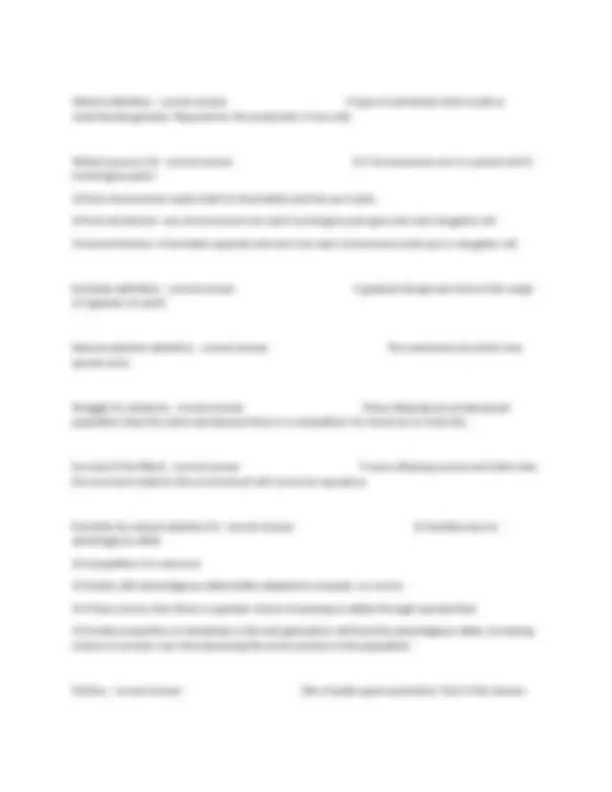
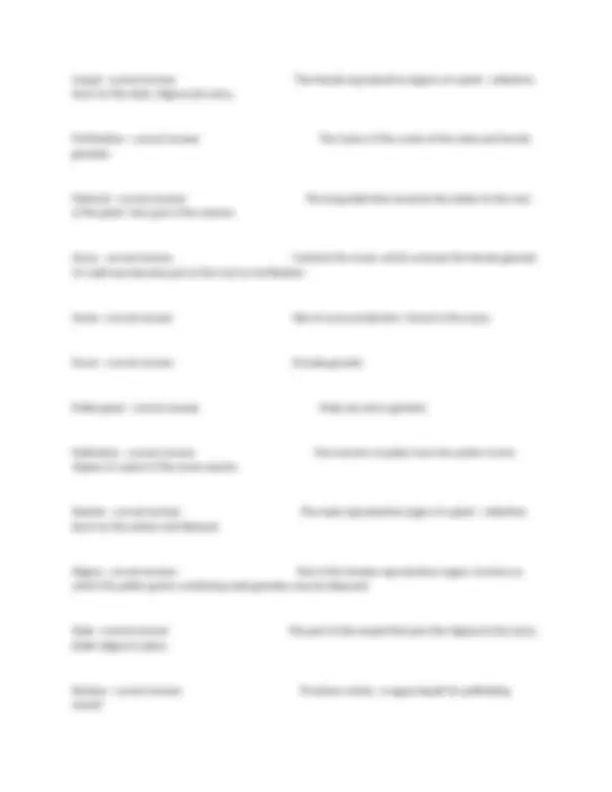
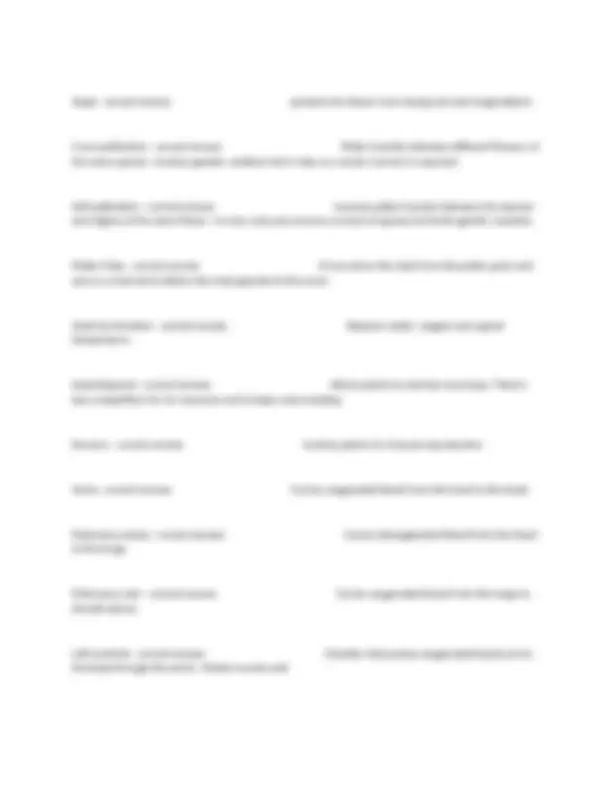
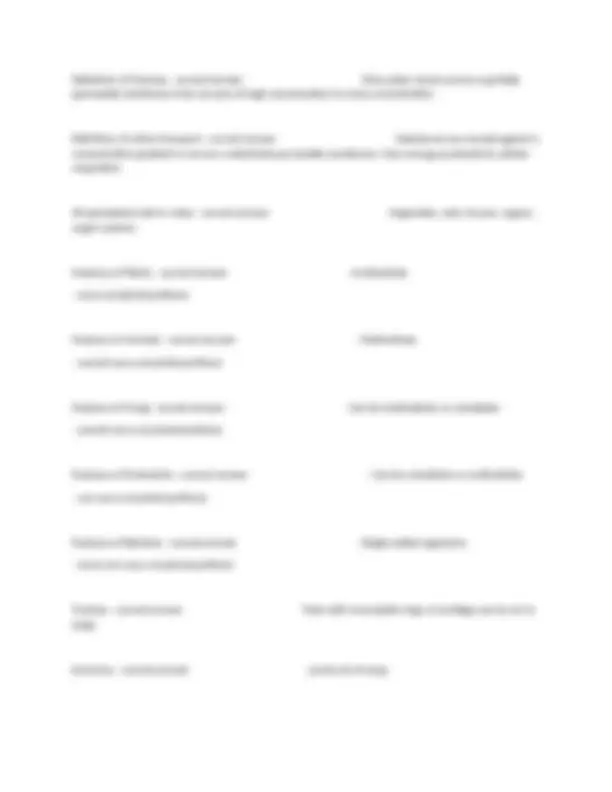
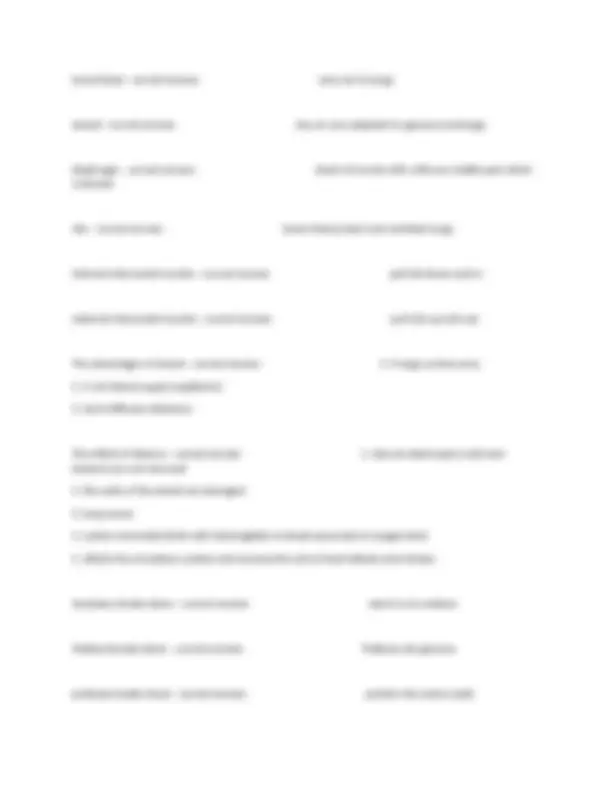
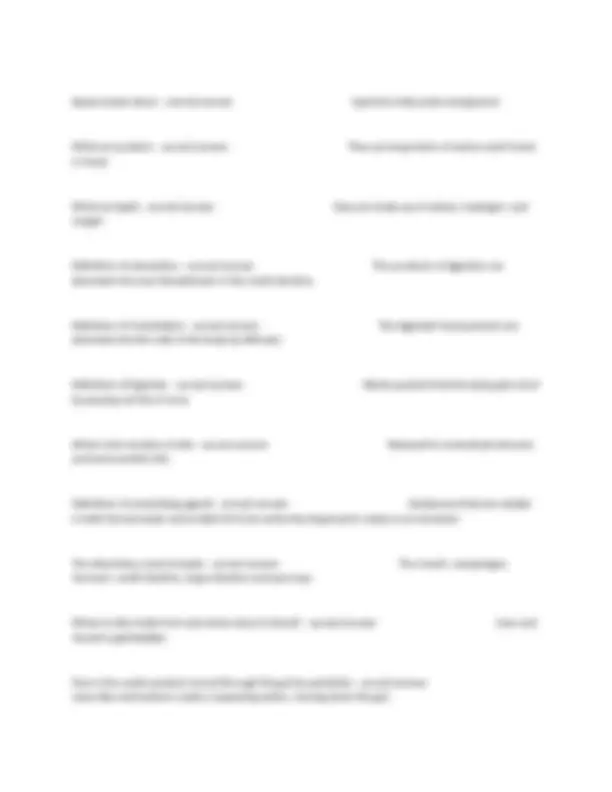
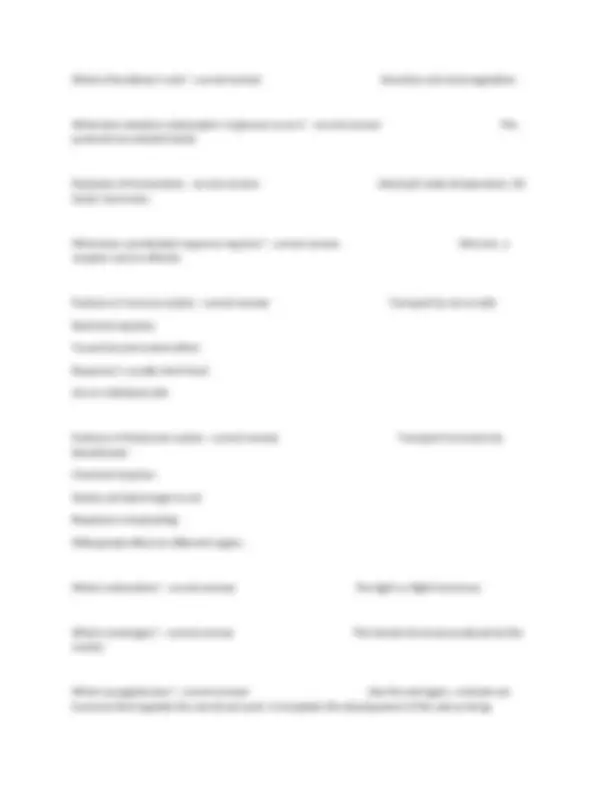
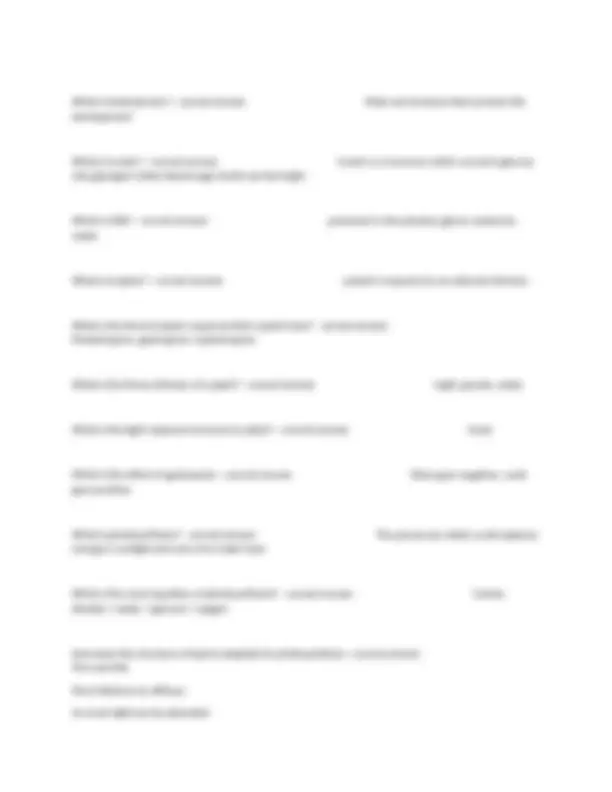
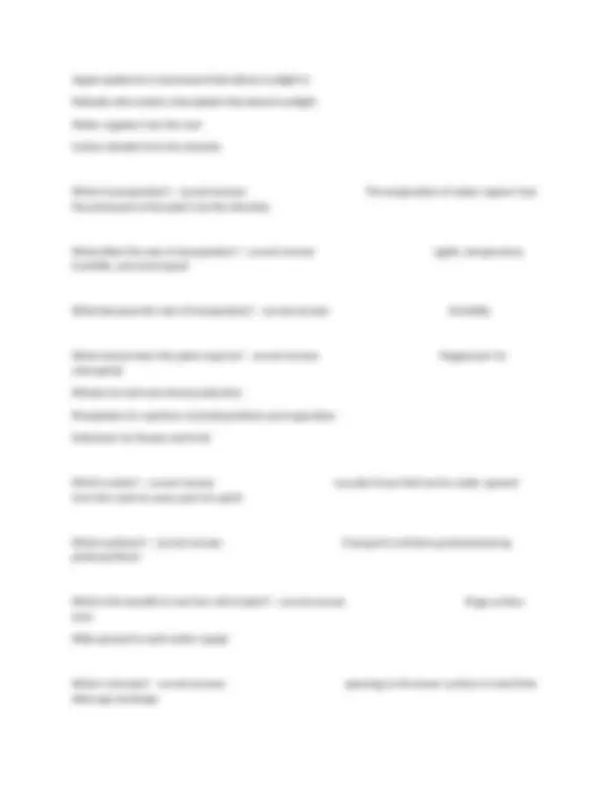
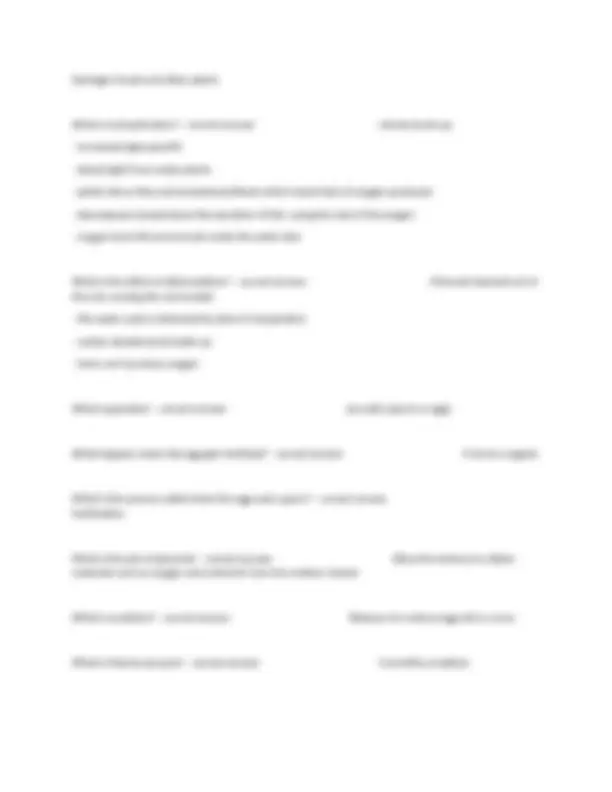
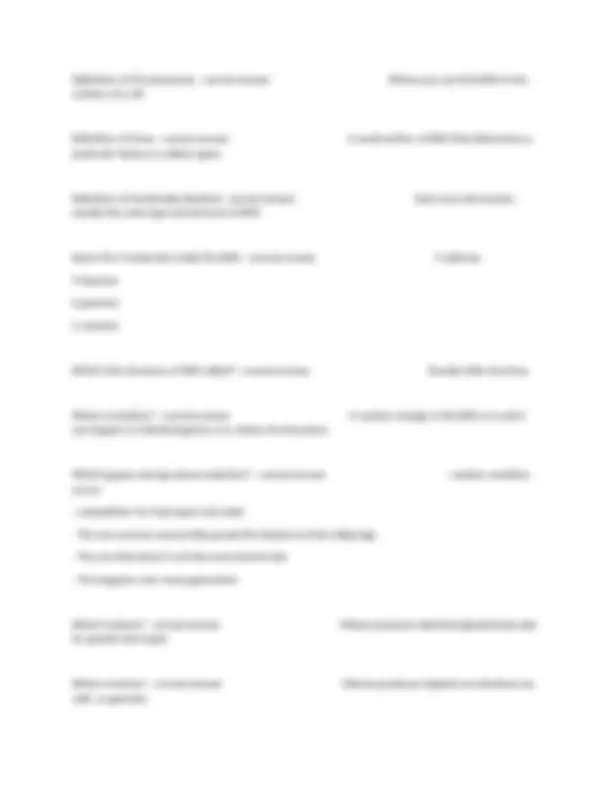
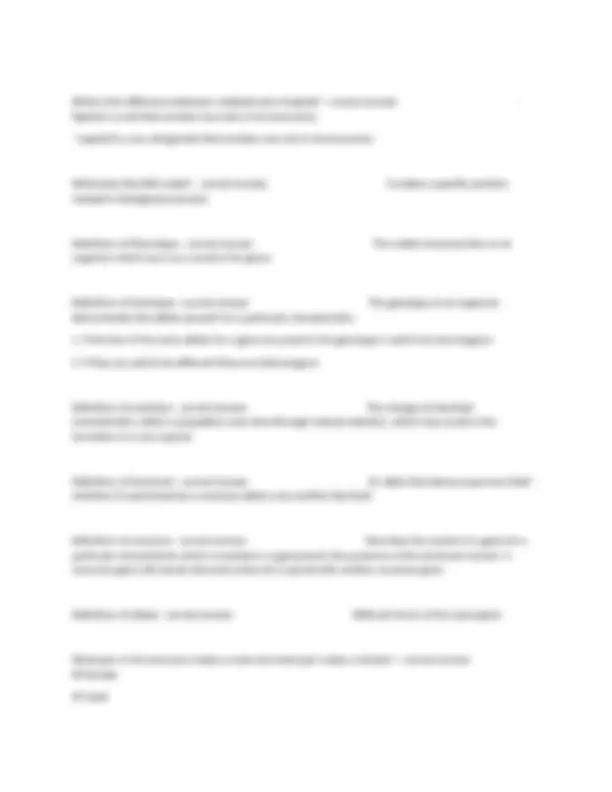
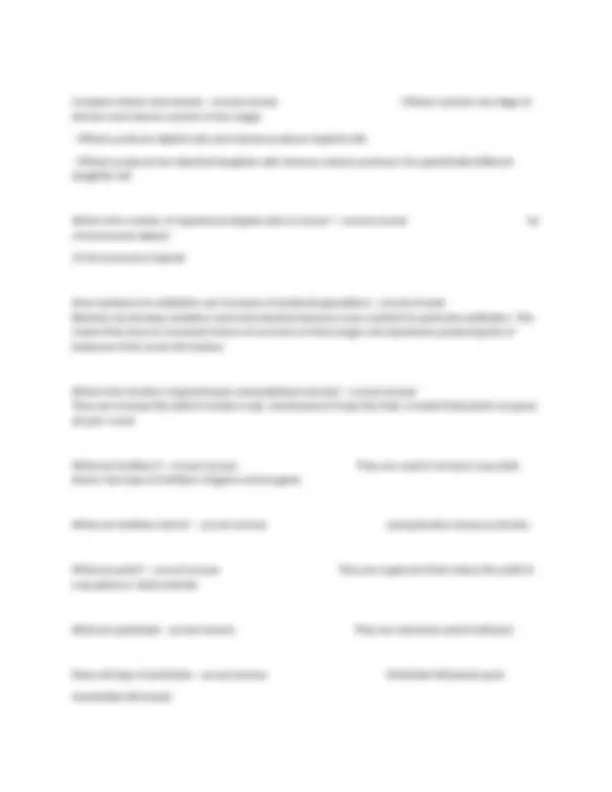

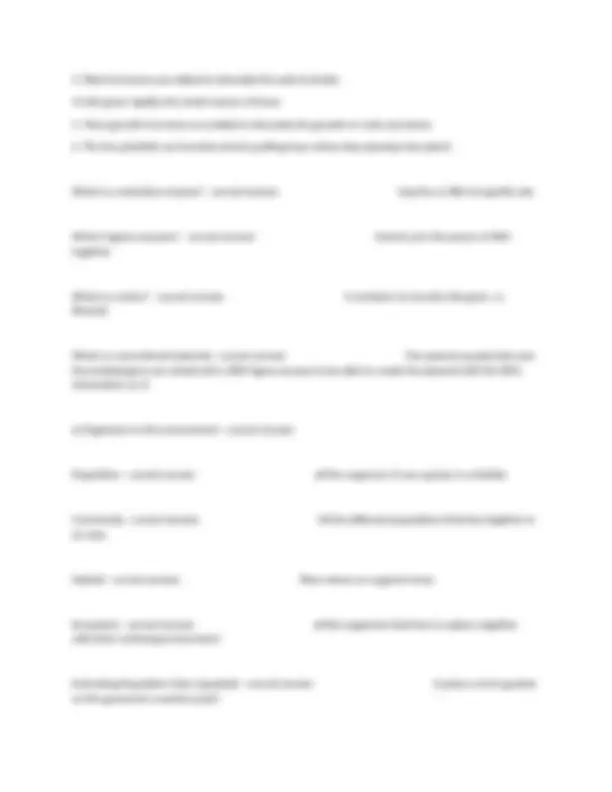
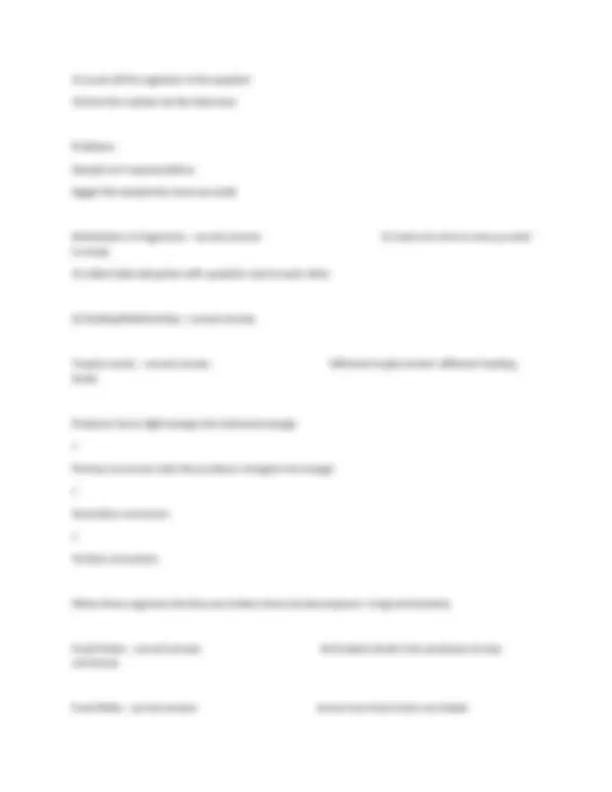
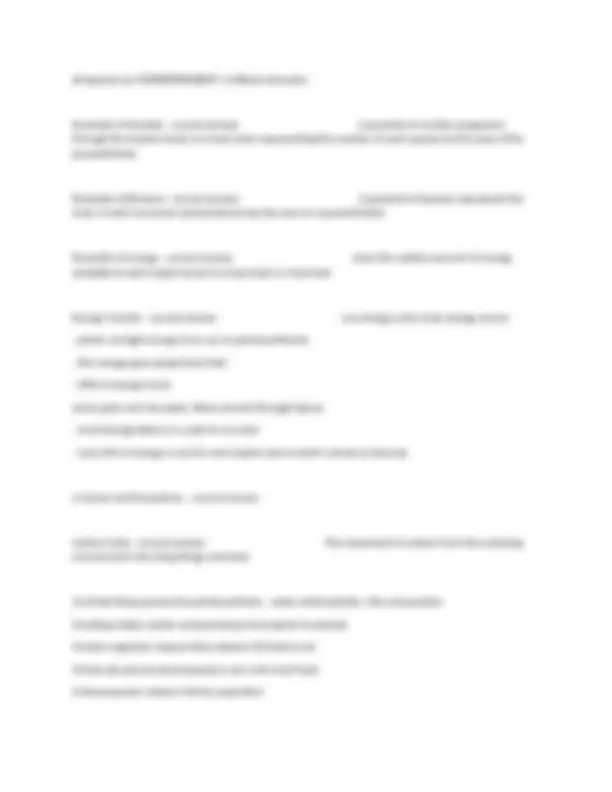
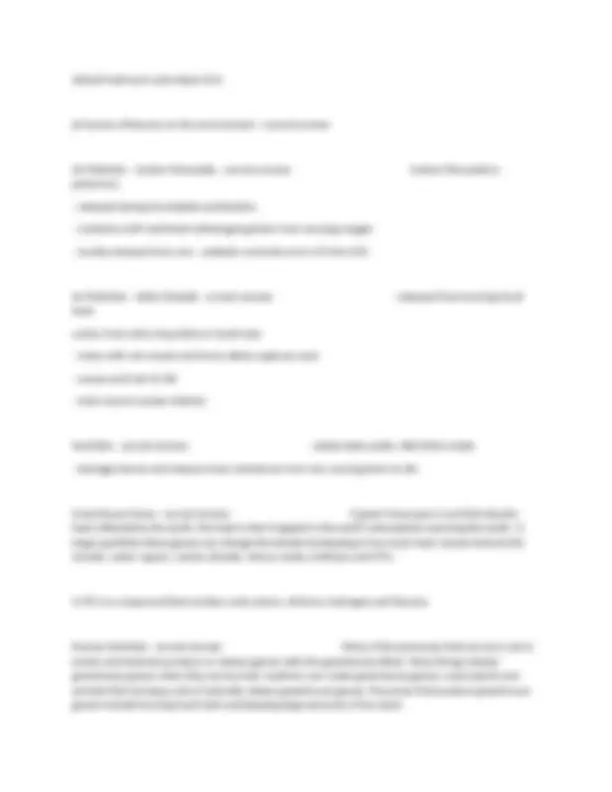
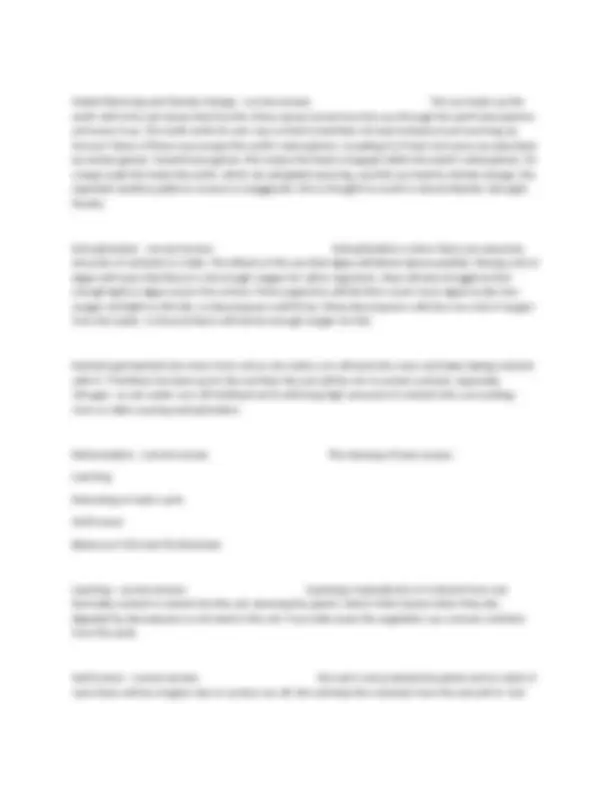
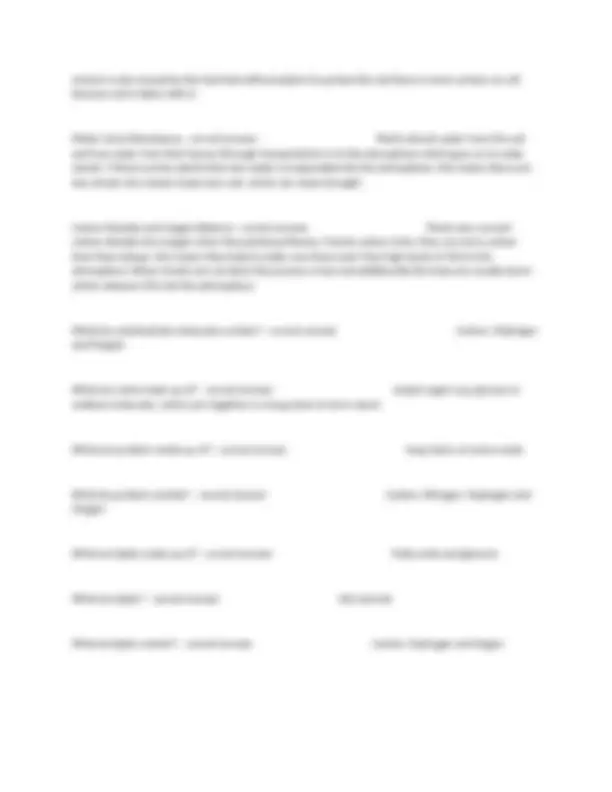
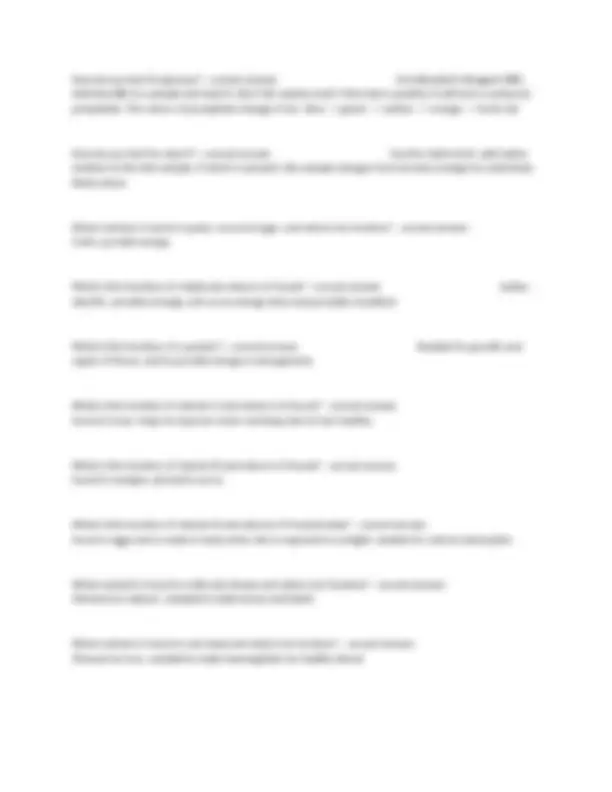
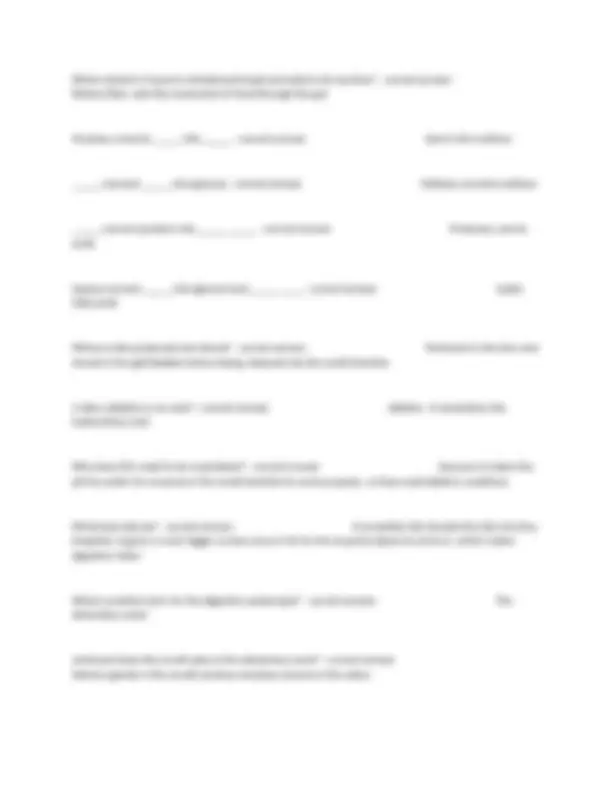
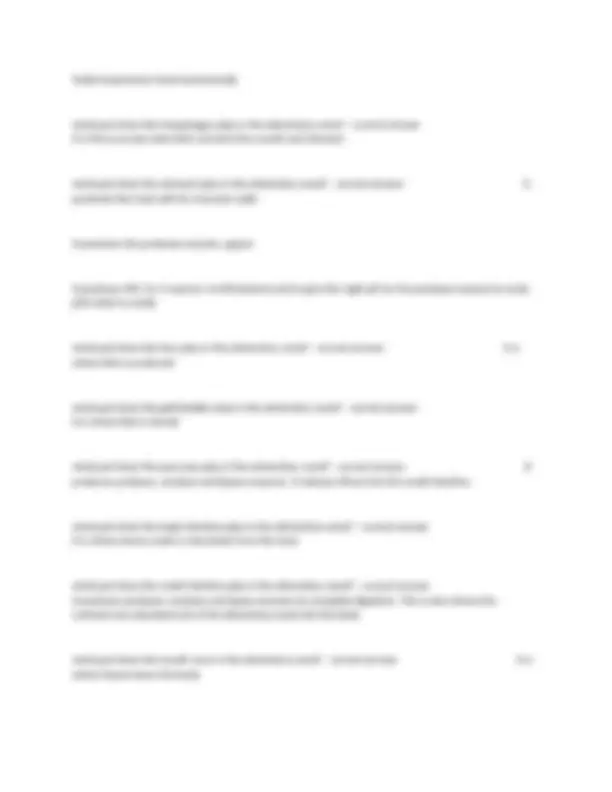
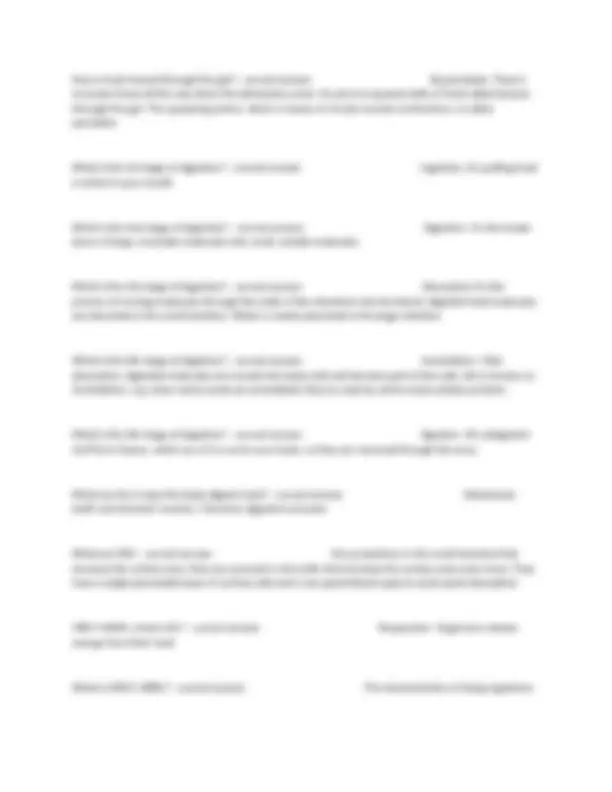
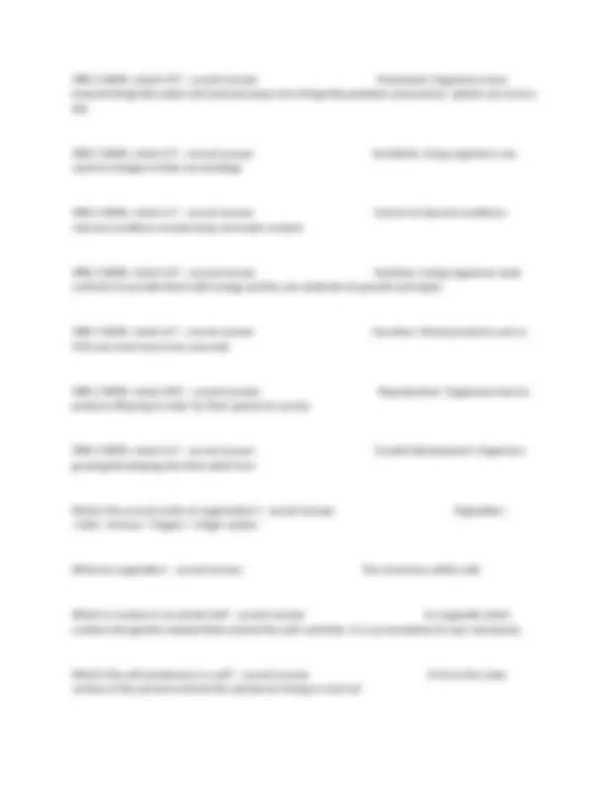
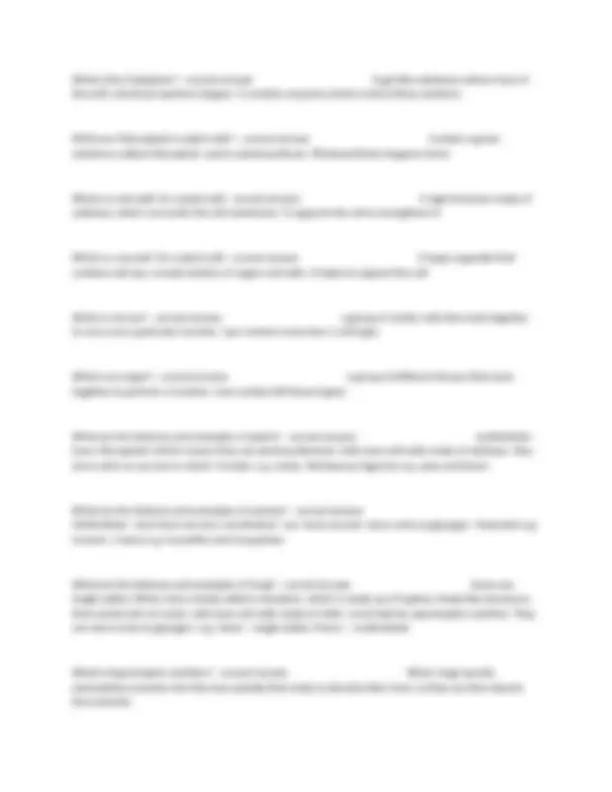
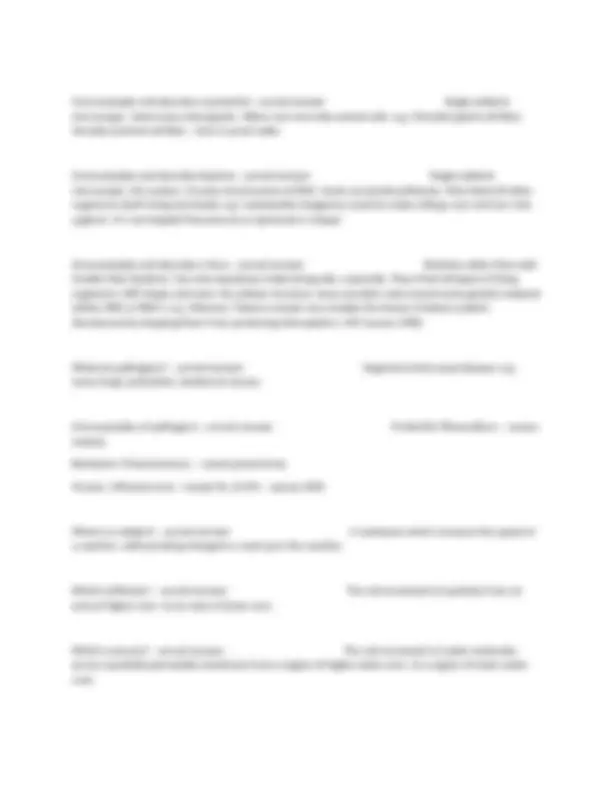
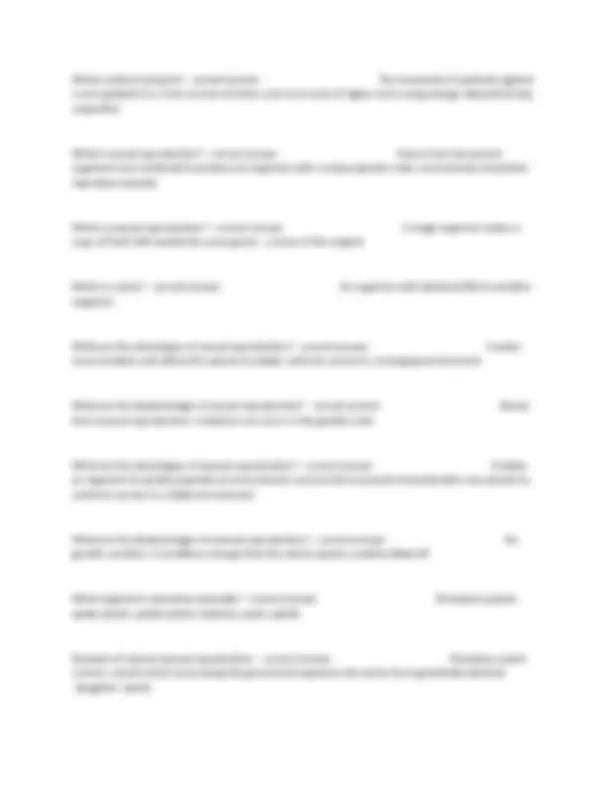
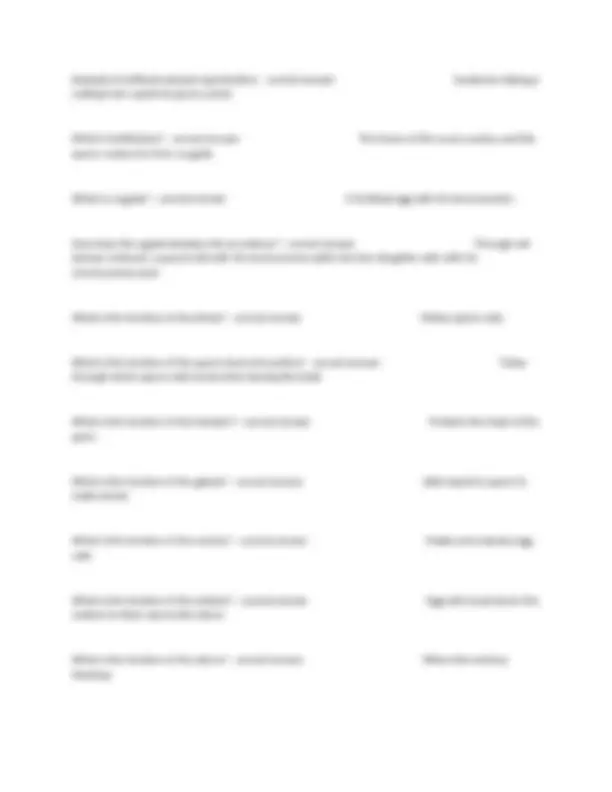
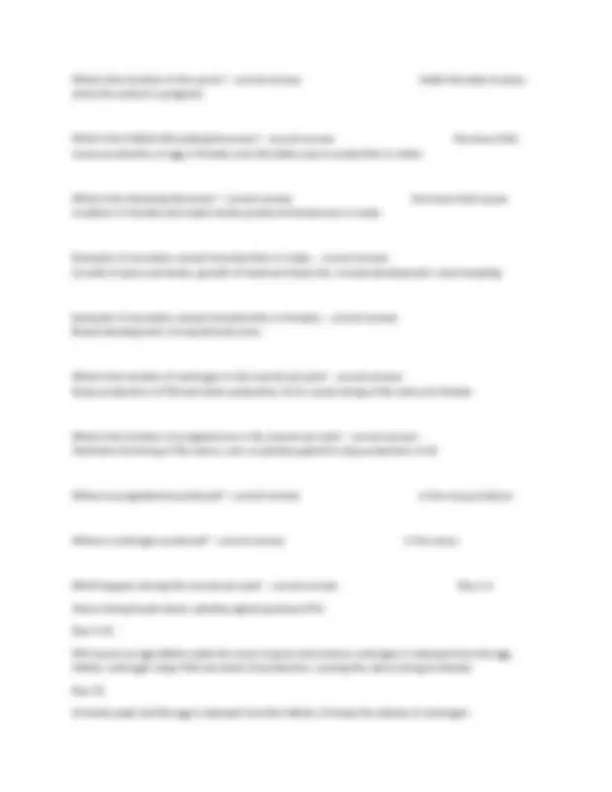
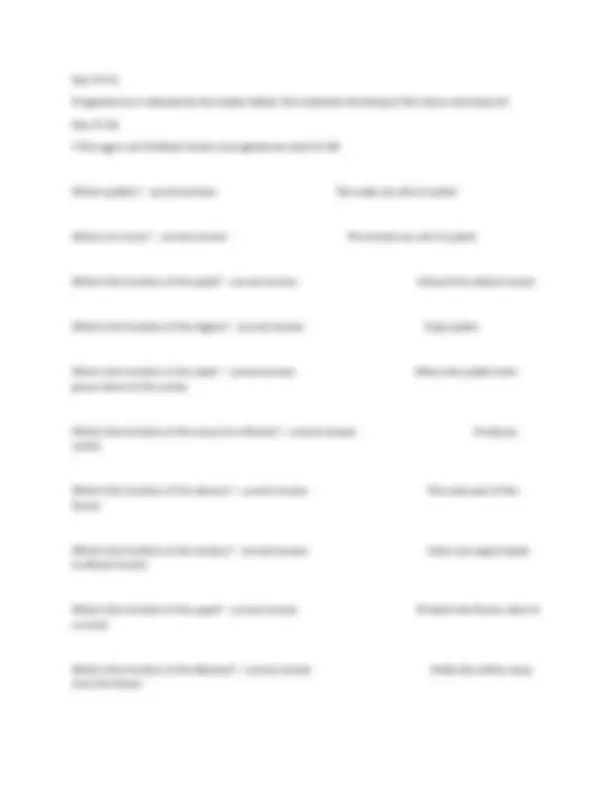



Study with the several resources on Docsity

Earn points by helping other students or get them with a premium plan


Prepare for your exams
Study with the several resources on Docsity

Earn points to download
Earn points by helping other students or get them with a premium plan
Community
Ask the community for help and clear up your study doubts
Discover the best universities in your country according to Docsity users
Free resources
Download our free guides on studying techniques, anxiety management strategies, and thesis advice from Docsity tutors
BIOLOGY EDEXCEL IGCSE DOUBLE AWARD
Typology: Exams
1 / 40

This page cannot be seen from the preview
Don't miss anything!

































Physical appearance of an organism (e.g. blue eyes) - correct answer Phenotype Genotype - correct answer The sets of genes (alleles) that an organism possesses (e.g. Bb) Allele - correct answer A different version of a gene Heterozygous - correct answer When the two alleles are different (e.g. Bb) Homozygous - correct answer When two alleles are identical (e.g. BB or bb) Dominant - correct answer Allele which controls the characteristic whenever present Recessive - correct answer Allele whose characteristic only shows up when it is present on both chromosomes. Co-dominance - correct answer When two alleles have equal dominance (they will both be expressed). DNA molecule - correct answer Two strands coiled to form a double helix, the strands being linked by a series of paired bases. Bases - correct answer Adenine (A) - Thymine (T) and Cytosine (C) - Guanine (G)
Diploid number of chromosomes in humans - correct answer 46 Haploid number of chromosomes in humans - correct answer 23 Nucleotide - correct answer The "backbone" of the DNA strands, a single nucleotide contains one of the 4 bases, a deoxyribose sugar and a phosphate group. DNA replication (6) - correct answer 1) Hydrogen bonds break (DNA helices enzyme)
Carpel - correct answer The female reproductive organs of a plant - collective term for the style, stigma and ovary. Fertilisation - correct answer The fusion of the nuclei of the male and female gametes Filament - correct answer The long stalk that connects the anther to the rest of the plant. Also part of the stamen. Ovary - correct answer Contains the ovule, which encloses the female gamete. It's wall may become part of the fruit on fertilisation Ovule - correct answer Site of ovum production. Found in the ovary. Ovum - correct answer Female gamete Pollen grain - correct answer Male sex cell or gamete. Pollination - correct answer The transfer of pollen from the anther to the stigma of a plant of the same species. Stamen - correct answer The male reproductive organ of a plant - collective term for the anther and filament. Stigma - correct answer Part of the female reproductive organs. Surface on which the pollen grains containing male gametes may be disposed Style - correct answer The part of the carpel that joins the stigma to the ovary. Holds stigma in place Nectary - correct answer Produces nectar- a sugary liquid for pollinating insects
Sepal - correct answer protects the flower from drying out and fungal attacts Cross-pollination - correct answer Pollen transfer between different flowers of the same species. Involves genetic variation but is risky as a vector (carrier) is required. Self-pollination - correct answer involves pollen transfer between the stamen and stigma of the same flower. It is less risky and ensures survival of species but limits genetic variation. Pollen Tube - correct answer Grows down the style from the pollen grain and acts as a channel to deliver the male gamete to the ovum. Seed Germination - correct answer Requires water, oxygen and a good temperature Seed dispersal - correct answer Allows plants to colonise new areas. There's less competition for for resources and it stops overcrowding Runners - correct answer Used by plants for Asexual reproduction Aorta - correct answer Carries oxygenated blood from the heart to the body Pulmonary artery - correct answer Carries deoxygenated blood from the heart to the lungs. Pulmonary vein - correct answer Carries oxygenated blood from the lungs to the left atrium. Left ventricle - correct answer Chamber that pumps oxygenated blood out to the body through the aorta - thicker muscle wall
N - MRSHGREN - correct answer nutrition, needing of food Test for glucose - correct answer 1. Warm water bath
Definition of Osmosis - correct answer Only water moves across a partially permeable membrane from an area of high concentration to a low concentration Definition of active transport - correct answer Substances are moved against a concentration gradient or across a selectively permeable membrane. Uses energy produced by cellular respiration All specialized cells in order - correct answer Organelles, cells, tissues, organs, organ systems Features of Plants - correct answer - multicellular
lipase breaks down - correct answer Lipid into fatty acids and glycerol What are proteins - correct answer They are long chains of amino acids found in foods What are lipids - correct answer they are made up of carbon, hydrogen, and oxygen Definition of absorption - correct answer The products of digestion are absorbed into your bloodstream in the small intestine. Definition of Assimilation - correct answer The digested food products are absorbed into the cells of the body by diffusion Definition of Egestion - correct answer Waste product that the body gets rid of by passing out the of anus What is the function of bile - correct answer Released to neutralised stomach acid and emulsify fats Definition of emulsifying agents - correct answer Substances that are soluble in both fat and water and enable fat to be uniformly dispersed in water as an emulsion. The alimentary canal includes - correct answer The mouth, oesophagus, stomach, small intestine, large intestine and pancreas. Where is bile made from and where does it stored? - correct answer Liver and stored in gall bladder How is the waste product moved through the gut by peristalsis - correct answer wave-like contractions create a squeezing action, moving down the gut.
The features of arteries - correct answer Thick muscular wall, and thick elastic fibre Small lumen Carries blood under high pressure carry oxygenated blood away from the heart The features of veins - correct answer Thin layers of muscle wall, and thin elastic fibre Big lumen Carries blood under low pressure carry deoxygenated blood towards the heart What is valves - correct answer It controls the flowing of heart in the blood, it stops the blood flowing backwards What are memory cells - correct answer They memorise the features of a pathogen, so if they invade the person again, they act more quickly and produce large number of the right antibody to prevent disease. Definition of plasma - correct answer Yellow liquid that transport dissolved food molecules, carbon dioxide and urea Adaptation of the red blood cells - correct answer Contain haemoglobin to carry oxygen to the cells. it has a thin outer membrane to let oxygen diffuse through easily. Shape increases the surface area to allow more oxygen to be absorbed efficiently. Name the two types of white blood cells - correct answer Lymphocytes and Phagocytes Which white blood cells produce antibodies - correct answer Lymphocytes
What is the kidney's role? - correct answer Excretion and osmoregulation What does selective reabsorption of glucose occurs? - correct answer The proximal convoluted tubule Examples of homeostasis - correct answer blood pH, body temperature, O levels, hormones, What does coordinated response requires? - correct answer Stimulus, a receptor and an effector Features of nervous system - correct answer Transport by nerve cells Electrical impulses Travel fast and instant effect Response is usually short lived Act on individual cells Features of Endocrine system - correct answer Transport hormones by bloodstream Chemical impulses Slowly and take longer to act Response is long lasting Widespread effect on different organs What is adrenaline? - correct answer The fight or flight hormones What is oestrogen? - correct answer The female hormone produced by the ovaries What is progesterone? - correct answer Like the estrogens, a female sex hormone that regulate the menstrual cycle, it completes the development of the uterus lining
What is testosterone? - correct answer Male sex hormone that controls the development What is insulin? - correct answer Insulin is a hormone which converts glucose into glycogen (when blood sugar levels are too high) What is ADH? - correct answer produced in the pituitary gland, reabsorbs water What is tropism? - correct answer a plant's response to an external stimulus What is the three tropism response that a plant have? - correct answer Phototropism, geotropism, hydrotropism What is the three stimulus of a plant? - correct answer Light, gravity, water What is the light response hormone in plant? - correct answer Auxin What is the effect of geotropism - correct answer Stem goes negative, roots goes positive What is photosynthesis? - correct answer The process by which a cell captures energy in sunlight and uses it to make food. What is the word equation of photosynthesis? - correct answer Carbon dioxide + water = glucose + oxygen How does the structure of lead is adapted for photosynthesis - correct answer Thin and flat Short distance to diffuses As much light can be absorbed
Examples of asexual reproduction plant - correct answer Runners, bulbs and tubers What is pollination? - correct answer The transfer of pollen from the anther to the stigma Examples of pollination - correct answer Cross pollination Wind pollination Self pollination Insect pollination Where does fertilisation takes place in plant? - correct answer Ovule in the ovary What is population? - correct answer Group of individuals of the same species that live in the same area What is community? - correct answer All the different populations that live together in an area What is habitat - correct answer The place where specific organisms live What is ecosystem? - correct answer A distinct self supporting system of organisms interacting with each other and with a physical environment How to use quadrants to sample from a habitat? - correct answer Randomly sample Measure the area of different species What is a trophic level? - correct answer Each step in a food chain or food web
What are the two ecological pyramids? - correct answer Pyramids of numbers Pyramids of biomass Why ain't all the energy transferred to the next level? - correct answer Some parts are not eaten Some parts are not digested Some of the mateáis absorbed form excretory products Loss to respiration energy Stages of carbon cycle - correct answer Respiration, photosynthesis, decomposition, combustion what is global warming? - correct answer The increased levels of carbon dioxide trapped inside the greenhouse gases, which caused rise of temperature. What is the effect of global warming? - correct answer 1. sea level would rise because polar ice melts
Definition of Chromosomes - correct answer Where you can find DNA in the nucleus of a cell Definition of Gene - correct answer A small section of DNA that determines a particular feature is called a gene Definition of Genetically identical - correct answer Each new cell receives exactly the same type and amount of DNA Name the 4 molecules inside the DNA - correct answer A-adenine T-thymine G-guanine C-cytosine What is the structure of DNA called? - correct answer Double helix structure What is mutation? - correct answer A random change in the DNA of a cell it can happen in individual genes or in whole chromosomes What happens during natural selection? - correct answer - random mutation occurs
What is the difference between a diploid and a haploid? - correct answer - Diploid is a cell that contains two sets of chromosomes